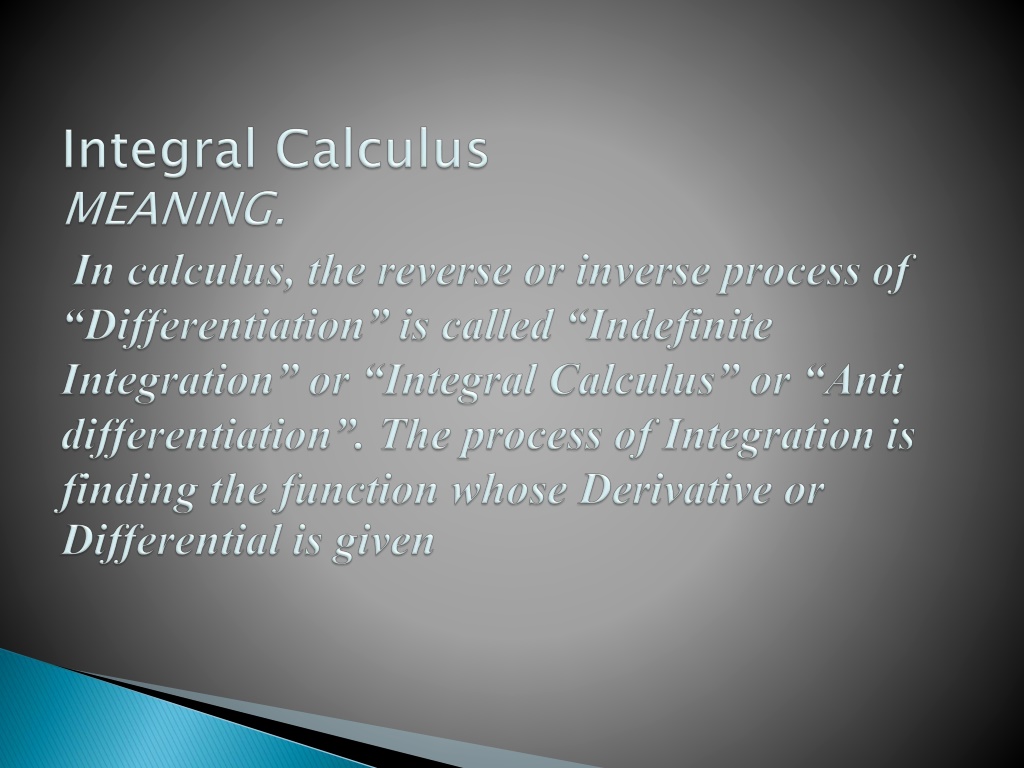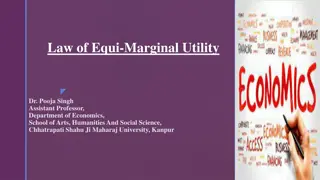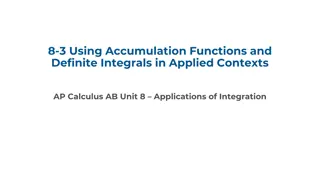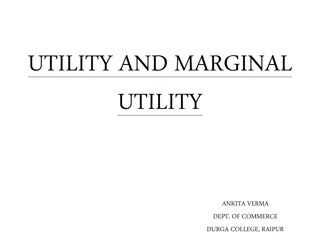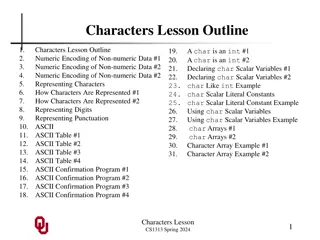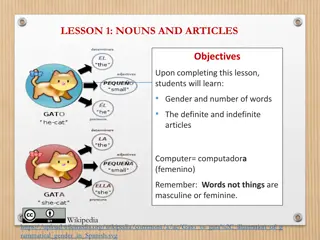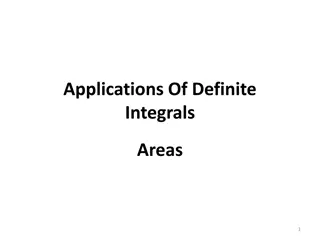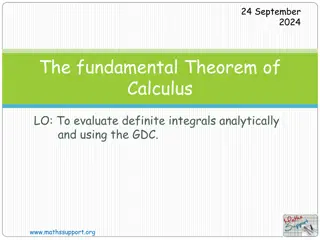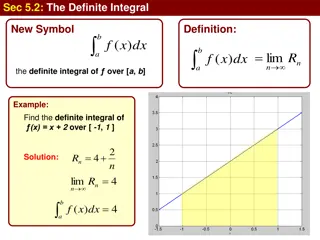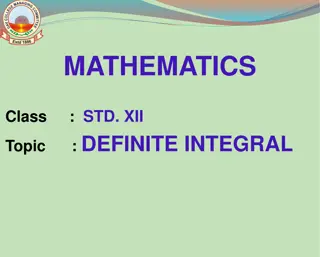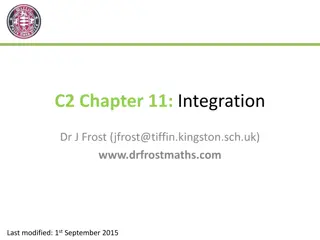Integration: From Marginal Utility to Definite Numeric Solutions
Integration plays a crucial role in mathematics, connecting concepts such as marginal utility and total utility functions, differential coefficients, rules for indefinite integration, and the process of definite integration. Learn about notation, rules, and examples to grasp the fundamentals and applications of integration.
Download Presentation

Please find below an Image/Link to download the presentation.
The content on the website is provided AS IS for your information and personal use only. It may not be sold, licensed, or shared on other websites without obtaining consent from the author. Download presentation by click this link. If you encounter any issues during the download, it is possible that the publisher has removed the file from their server.
E N D
Presentation Transcript
Integration (Indefinite Integration): If the Marginal Utility Function is 2q, then the Total Utility Function is q2. That is, if derivative is given, our problem is to find out the function.
If the Differential co-efficient of F(x) with respect to x is f(x), then an Integral of f(x) with respect to x is F(x). Notation for Indefinite Integration: If d/dx f(x) = f(x), then the usual notation for the indefinite integral is f(x) dx or y dx = F(x) + C
Rule: I dx= x+c Rule: II K dx= K dx=Kx+c Rule: III x dx= + / + +C , n -1 Rule: IV Integral of sum or difference A number of functions is equal to the sum or difference of the Integrals of the separate function. (dx,+ dx+.....+dx ) = dx,+ dx+.....+ dx
Rule: V Integral of Multiple by a Constant A function is multiplied by a constant number, this number will remain a multiple of the integral of the function. Example: 4x dx = 4 x dx = 4 x + /2+1 + C = 4x /3 Rule: VI Integration by Substitution A product or quotient of two differentiable functions of x, it may be possible to express them as a constant multiple of another function f(u) and its derivative is du/dx, f(x) dx= f(u).du
Rule: VII Logarithmic Function Rule: y= log X 1/x dx= logx + C. where C is constant. Rule: VIII Exponential Function Rule y= x y= x dx= x +c.
In definite integration a definite numerical solution to the problem is possible. In definite integration a limit is added in the process of integration. There should be the lower and upper limits. This is represented as . This integral has upper limit as b and lower limit as a. If f(x) is a continuous function on closed interval (a,b) and F(x) is an integral function of f(x) then -is called definite integration
Notation for Definite Integration It is to be read as the definite integral of y from x=a to x=b.
I) If we interchange the limiting values of integration, only the sign of the definite integral changes; thus, II) The limits can be broken. A definite integral can be expressed as a sum of a finite number of definite sub- integrals as follows.
Where c1 and c2 are values in between a and b. III ) The value of definite integral is independent of the variable of the integration IV) V) Substitution necessitates changes in the limits
Applications in Economics indefinite integration is used in economics to derive the total functions from the marginal functions. i.e. Total cost function It is an integral of marginal cost function C= MC dx. Total Revenue Function It is an integral of marginal revenue function R= MR dx. Total Utility Function It is an integral of marginal utility function U= MU dx.
It is a function of income i.e. c=f(y). It is a integral function of MPC C= MPC dy Savings Functions. S= f(y) It is the integral function of MPS. S= MPS dy.
Cost Function: MC is given, we have to find out the total cost(c) i.e. C= MC.dx = dc/dx. dx
Revenue Functions: MR is given, we have to find out the Total revenue (R or TR) R= MR.dx = dR/dx.dx
Applications of Definite Integration Capital Formation Area between Two curves Consumer s Surplus Producer s Surplus
Capital formation means increase in the real stock of capital during a given period. Rate of capital Formation may thus be expressed as dk/dt K(t)= I(t) dt= dK/dt .dt = dK
Consumers Surplus is the difference between the price that a consumer is willing to pay for a commodity rather than go without it and the actual price he pays for the commodity Consumer s surplus= Potential price- Actual price
Given the demand function p= 35-2x-x, find consumer s surplus at x=3. If the demand function at p= 85-4x-x , find consumer s surplus at po= 64 The demand function for a commodity p=20-3x. The supply function p=2x. Find consumer s surplus. 1. 2. 3.
The supply function for a commodity p=2+D. Find the Producer s surplus when p=18. Find the producer s surplus for the supply function p=2x +x+5. when x0=3. The demand function for a commodity p=25D-20. the supply function p=5D+60 1. 2. 3.
Consumers surplus and Producers surplus: Given the demand function p=8-2x and the supply function p=2+x, find the consumer s surplus and the producer s surplus. 1.
